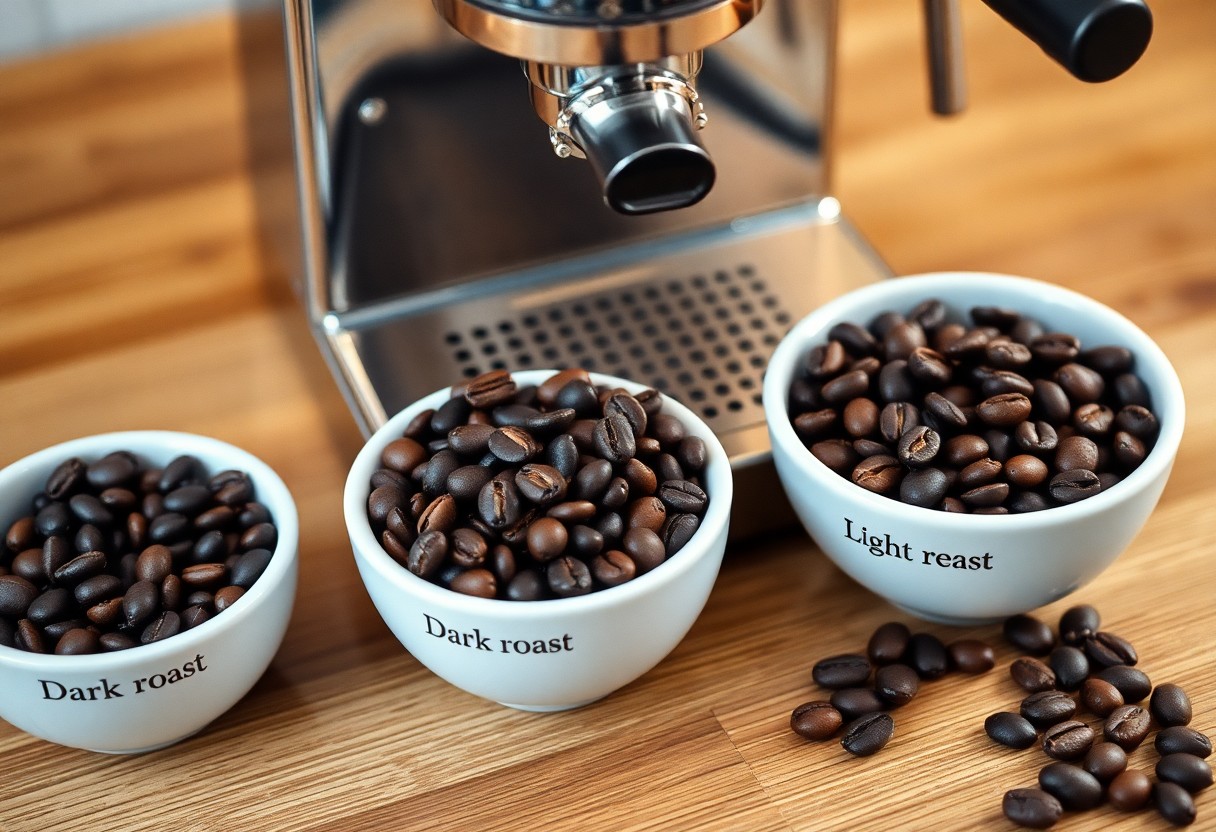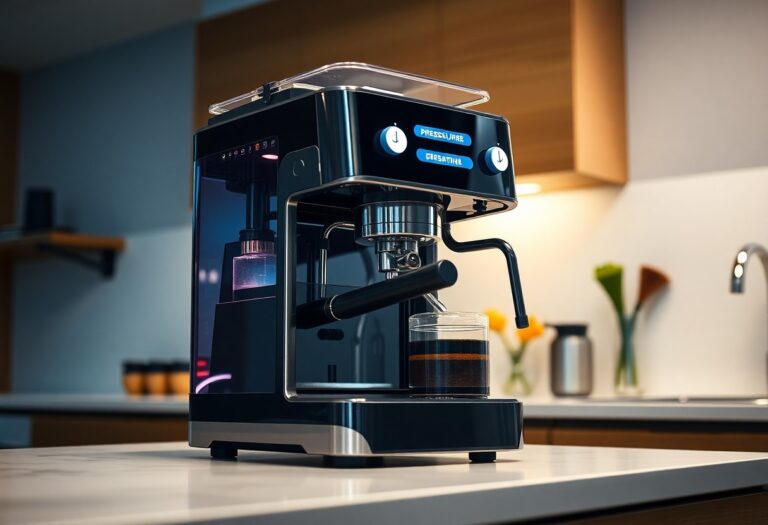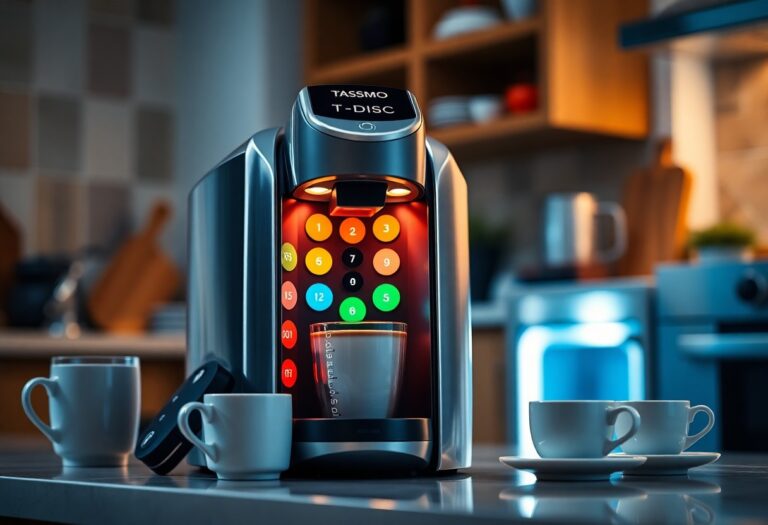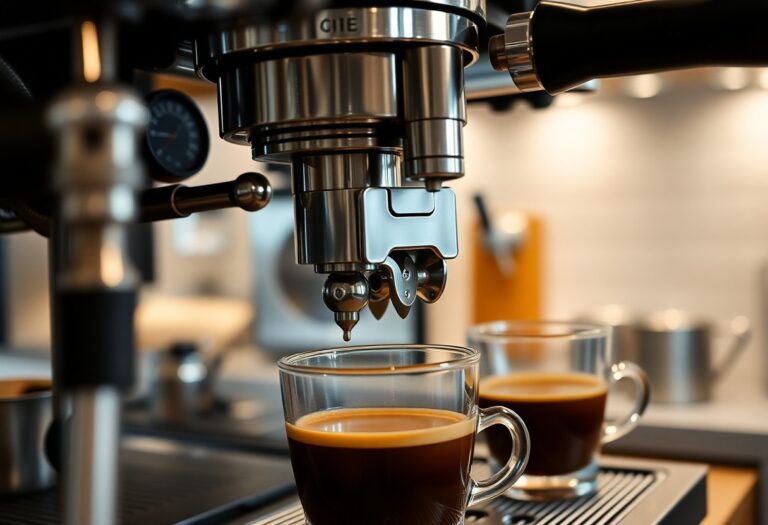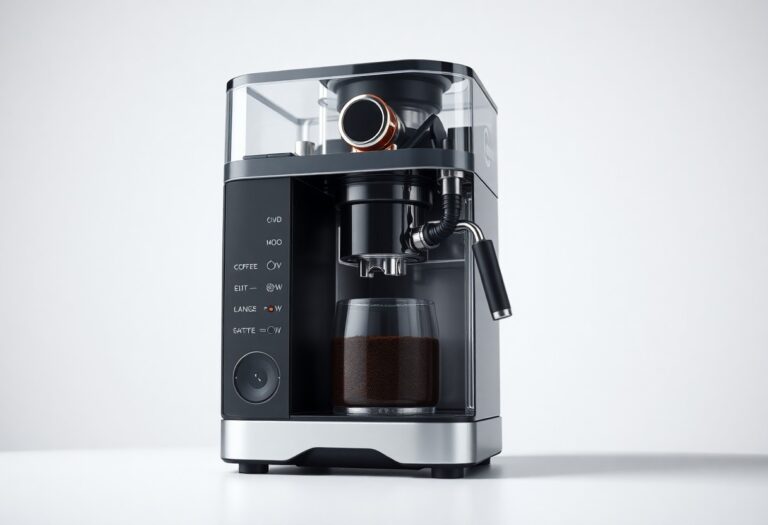What Type of Coffee for an Espresso Machine – Bean Categories
You may be wondering what type of coffee beans are best suited for your espresso machine. Choosing the right bean is important to achieving that perfect shot of espresso, as it can significantly influence the flavors and aroma. Single-origin beans often provide a unique taste profile, while espresso blends are crafted specifically for the espresso-making process, balancing acidity and sweetness. Additionally, dark roast beans tend to highlight the boldness of espresso, offering a rich and satisfying experience. Ultimately, understanding these categories will enhance your brewing journey and elevate your coffee enjoyment.
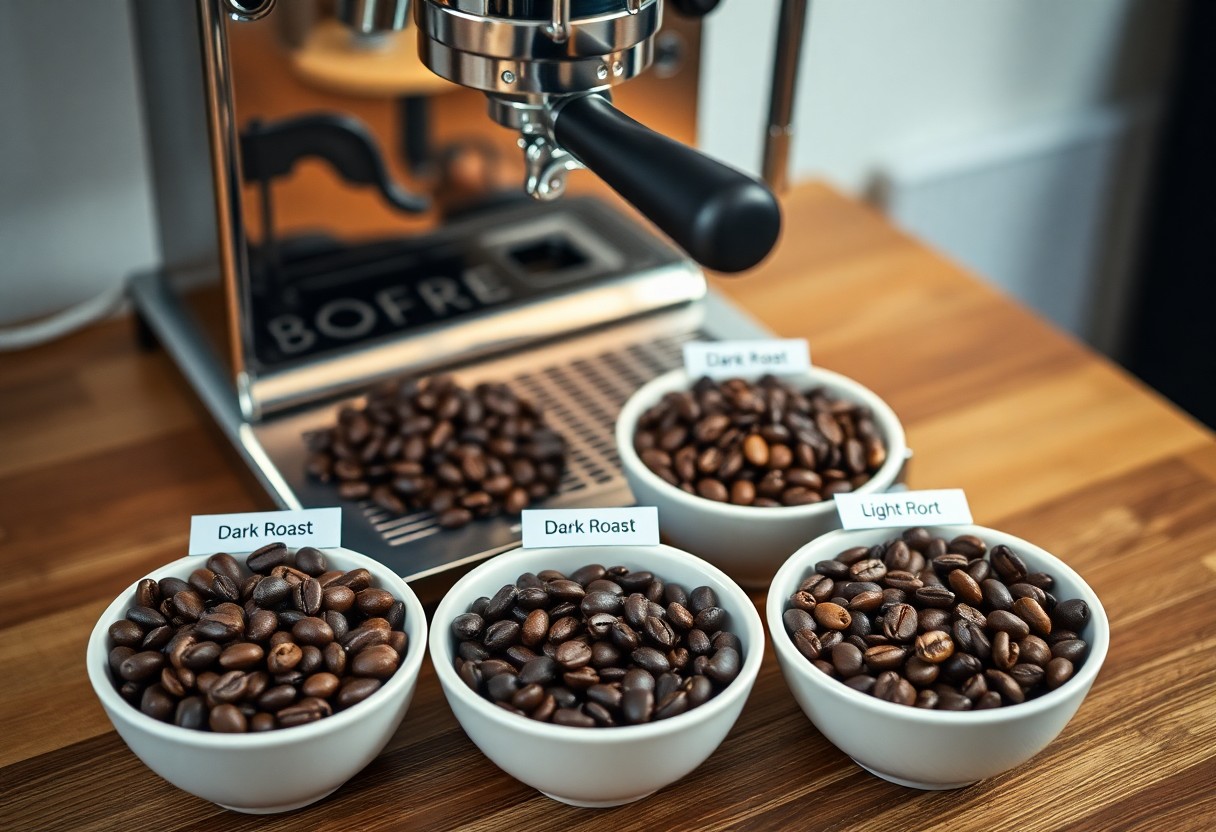
Key Takeaways:
- Espresso blends typically combine beans from different regions to enhance flavor complexity.
- Arabica beans are known for their smooth and nuanced flavors, making them a popular choice for espresso.
- Robusta beans provide a strong, bold flavor with more caffeine, contributing to a rich crema in espresso.
- Single-origin beans can highlight specific flavor profiles, allowing for unique tasting experiences in espresso.
- Freshly roasted beans are necessary, as they preserve the flavors and aromas that are vital for a great espresso shot.
Dissecting the Coffee Bean Spectrum
Understanding the range of coffee beans available can significantly enhance your experience with an espresso machine. From flavor profiles to acidity levels, each type of bean offers unique characteristics that influence your brew. As you explore these options, you’ll discover combinations and roasts that can bring out the best in your espresso. Armed with this knowledge, you can make informed choices that align perfectly with your taste preferences.
Arabica vs. Robusta: The Flavor Showdown
Arabica beans are well-known for their complex flavors and aromatic profiles, often exhibiting notes of fruit, sugar, and even chocolate, while Robusta beans typically present a stronger, more bitter flavor with earthy undertones and higher caffeine content. This contrast influences the coffee’s body and crema, making Arabica the favored choice for high-quality espresso, though many blends incorporate Robusta for added richness.
The Role of Bean Origin: Terroir and Its Impact
The geographic origin of coffee beans plays a significant role in their flavor profile, often referred to as terroir. Factors such as soil composition, altitude, and climate contribute to the distinct tastes and aromas found in beans from different regions—think the berry-like brightness of Ethiopian coffee versus the earthy richness of Brazilian varieties.
Regional characteristics profoundly influence your espresso’s flavor. For instance, beans from Central America often offer a clean, bright acidity balanced with sweetness, while beans from Sumatra usually impart deep, rich tones with low acidity. Understanding these nuances lets you select your beans based on personal taste preferences. Engaging with specific origins can elevate your espresso, as you will likely favor certain flavor profiles over others based on your experiences. Exploring smaller, single-origin farms can also yield unique flavors that you may not find in mass-produced options, making each cup a new adventure.
Unlocking Flavor Profiles: What to Look For
Exploring the flavor profiles of your coffee beans leads to a more enriching espresso experience. Pay attention to specific attributes such as aroma, acidity, and body. Each of these elements plays a critical role in shaping how you perceive the taste of your espresso, allowing you to tailor your brew to suit your personal preferences. Beans from different regions often impart unique taste notes, so be curious and experiment with various options.
Aroma and Acidity: The Sensory Experience
The aroma of your coffee is the first indicator of its flavor potential, enveloping your senses with hints of fruit, floral, or nutty notes. Acidity contributes brightness, often found in high-quality Arabica beans, and can range from a gentle tang to a sharp bite, balancing your espresso’s overall flavor.
Body and Aftertaste: The Full Mouthfeel
Body refers to the weight and thickness of your espresso on the palate, which can range from light and delicate to rich and robust. A well-balanced aftertaste enhances your overall experience, leaving lasting impressions of sweetness, bitterness, or even hints of chocolate or caramel.
To deeply appreciate body and aftertaste, consider the roast profile of your beans. Darker roasts typically produce a heavier body with more pronounced aftertaste, while lighter roasts offer clarity and a nuanced finish. For example, a medium-roast Ethiopian coffee may have a lively, berry-like body combined with a sweet, lingering aftertaste. Exploring different beans and roast levels allows you to discover what tantalizes your taste buds the most.
Roasting Levels: The Impact on Espresso
The roasting level of your coffee beans significantly influences the flavor and aroma of your espresso. Each roast level—light, medium, and dark—offers distinct characteristics that can enhance or detract from your espresso experience. The right roast can bring forth bold flavors and rich aromas, while the wrong choice may result in a lackluster shot. Understanding how roasting affects extraction is key to mastering your espresso brewing technique.
Light, Medium, and Dark Roasts: A Comparative Analysis
| Roast Type | Characteristics |
|---|---|
| Light Roast | Bright acidity, fruity flavors, and often lacks bitterness. |
| Medium Roast | Balanced flavor profile with a moderate level of acidity and sweetness. |
| Dark Roast | Bold, rich flavors with pronounced bitterness and chocolatey notes. |
Understanding the Roast Profile: How It Affects Extraction
The roast profile of your coffee beans directly influences extraction during brewing. Light roasts retain more of their natural sugars and acids, leading to a brighter and more aromatic espresso, but require careful extraction techniques to avoid sourness. On the other hand, dark roasts may mask some of these flavors due to the presence of oil and bitterness. Knowing your roast profile helps you tweak the brew temperature and extraction time for optimal results, maximizing flavor and aroma in your final cup.
For light roasts, the higher acidity can necessitate a shorter extraction time to prevent an overly bright or sour cup. Medium roasts provide a balanced canvas, allowing for flexibility in extraction variables. Dark roasts, however, can benefit from longer extraction times, as the bold flavors tend to mellow out with a more extended brew. By mastering the roast characteristics, you can precisely control your espresso experience, tailoring each cup to your taste preference.
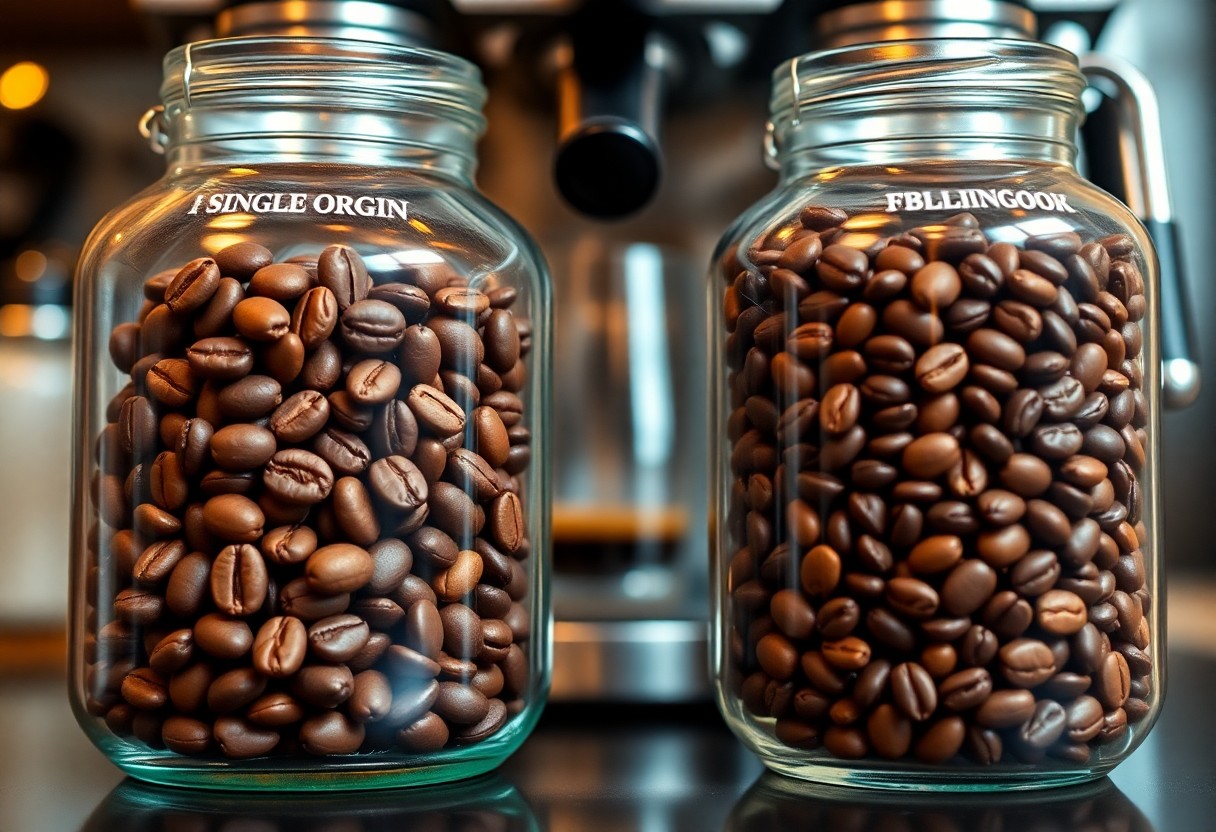
Blends vs. Single Origin: Making the Right Choice
Choosing between a blend or a single-origin coffee ultimately shapes your espresso experience. Blends combine beans from different origins, often aiming for a harmonious and consistent flavor profile, which can appeal to those who enjoy a balanced cup. In contrast, single-origin coffees reflect the unique characteristics of their specific region, offering distinct flavors based on factors like altitude, climate, and soil. Your choice depends on whether you prioritize consistency and balance, or want to explore diverse flavor notes that highlight the nuances of a particular locale.
The Art of Blending: Achieving Balance and Complexity
Blending requires skill to create a cup that captures the best attributes of various beans. The goal is harmony—combining beans with complementary flavor profiles can result in a coffee that is both complex and well-rounded. For instance, a blend might pair the fruity, acidic notes of an Ethiopian bean with the rich, chocolate undertones of a Brazilian bean, crafting a satisfying cup that appeals to a wider audience. This artistry allows roasters to maintain consistency in flavor across seasons and batches.
Celebrating Single Origins: A Deep Dive into Unique Characteristics
Single-origin coffees are celebrated for their distinctive flavor profiles and the story they tell about their growing region. Each variety reflects its origin through unique characteristics influenced by altitude, cultivation methods, and local climate, resulting in a vibrant tapestry of tastes. For instance, a Guatemalan coffee may exhibit rich chocolate notes paired with a hint of spice, while a Sumatran coffee is often earthy with herbal undertones. Exploring these coffees can be an enlightening journey, allowing you to savor the subtle differences and complexities that each origin brings to your cup.
Regions like Colombia are known for their well-balanced cups, often featuring nutty and caramel flavors, while Kenya dazzles coffee enthusiasts with bright acidity and berry notes. As you sip on a single-origin coffee, you not only appreciate the nuances but also gain insight into the coffee’s journey from farm to cup. This exploration can enhance your overall appreciation for the craftsmanship of each bean and the dedication of growers who cultivate them.
Coffee Bean Storage and Freshness: Maximizing Flavor
Proper storage of your coffee beans plays a significant role in preserving their freshness and flavor profile. Exposure to air, light, moisture, and heat can diminish the quality of beans over time, resulting in stale and less flavorful espresso. For the best results, store your beans in an airtight container in a cool, dark place. This helps to maintain their natural oils and aromatic compounds, ensuring your espresso tastes as rich and vibrant as possible.
Best Practices for Storage: Keeping Beans Fresh
Utilizing an airtight container is vital for protecting your coffee beans from environmental factors. Glass or ceramic containers with a tight seal are ideal, while vacuum-sealed bags are perfect for longer storage. Store your beans away from direct sunlight and heat sources, such as ovens or stoves. It’s helpful to buy beans in small quantities to minimize exposure to air, ensuring you use them within a few weeks for optimal freshness.
The Effects of Freshness on Espresso Quality
Freshness has a direct impact on the flavor and quality of your espresso. Coffee beans start to lose their flavor just days after roasting; ideally, you should use them within two to three weeks for the best taste. Freshly roasted beans produce a creamy, rich crema and vibrant flavor notes that stale beans simply cannot replicate. Note that the extraction process is also influenced by freshness—the more volatile oils in fresh beans lead to a more nuanced and enjoyable cup.
Stale coffee beans not only result in dull flavors but can also affect the crema of your espresso—an vital hallmark of quality. When brewing with fresh beans, your espresso can showcase bright acidity, robust body, and complex sweetness. For instance, using beans roasted just a week prior can yield a full-bodied espresso that teems with rich flavor notes, while beans that’s weeks old may produce a flat and uninspiring shot. To maintain the full spectrum of flavors inherent in your chosen beans, prioritize your storage methods and consumption timeline.
Conclusion
To wrap up, selecting the right coffee beans for your espresso machine can significantly impact your brewing experience. You should consider the roast level, origin, and bean blend to tailor flavors to your taste. Whether you opt for a light, medium, or dark roast, each choice holds unique characteristics that influence the final cup. Experimenting with different bean categories will help you discover what best suits your preferences, ensuring that your espresso consistently meets your expectations.
FAQ
Q: What types of coffee beans are best suited for an espresso machine?
A: The best types of coffee beans for an espresso machine are generally Arabica and Robusta. Arabica beans are known for their sweet, complex flavors and lower caffeine content, making them a popular choice for espresso. Robusta beans, on the other hand, have a stronger, more bitter taste and higher caffeine levels, which can enhance the crema in an espresso shot. Many espresso blends combine both types to balance flavor and richness.
Q: How does the roast level of coffee beans affect espresso?
A: Roast level plays a significant role in the flavor profile of espresso. Light roasts tend to preserve the natural characteristics of the coffee, offering bright acidity and floral notes. Medium roasts create a balanced profile, highlighting sweetness alongside acidity. Dark roasts, which are commonly used for espresso, provide rich, bold flavors with a pronounced bitterness and reduced acidity. Ultimately, the choice of roast level depends on personal preference and the desired flavor outcome.
Q: Are single-origin beans preferred over blends for espresso?
A: Single-origin beans can offer unique and distinct flavors that reflect their specific origin, making them an exciting choice for espresso enthusiasts. However, they may lack the complexity and balance found in well-crafted blends that combine various bean types from multiple origins. Many baristas and espresso lovers choose blends that have been specifically designed to create a harmonious flavor profile suitable for espresso preparation.
Q: Should I choose fresh beans or pre-ground coffee for my espresso machine?
A: Freshly roasted whole beans are always recommended over pre-ground coffee for an espresso machine. Grinding beans just before brewing preserves the necessary oils and volatile compounds that contribute to a rich flavor and aroma in espresso. If you’re using an espresso machine, investing in a high-quality grinder is key to achieving the optimal grind size and ensuring the best extraction for your espresso shots.
Q: How does the origin of coffee beans influence their taste in espresso?
A: The origin of coffee beans significantly influences their taste and characteristics due to factors such as growing altitude, climate, soil conditions, and processing methods. For example, beans from Latin America often exhibit bright acidity and nutty flavors, while African beans may have fruity and floral notes. Beans from Indonesia tend to be earthy and robust. Understanding the regional flavor profiles can help you select beans that align with your flavor preferences when making espresso.

